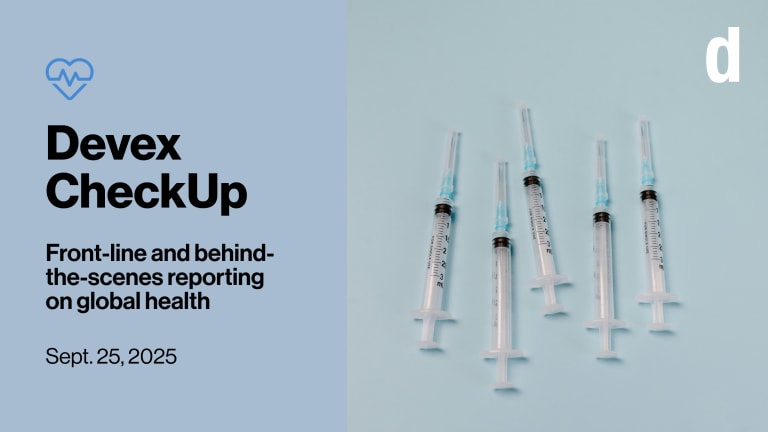
Across the world, millions of older people are losing their sight — not because aging makes it inevitable, but because we have failed to act. In many communities where The Fred Hollows Foundation works, vision loss is wrongly accepted as a natural part of growing old, while eye health for older populations remains shockingly underfunded and overlooked.
Today, 73% of all avoidable vision loss in the world is concentrated in people aged 50 and over — that’s around 800 million people living with a condition that could have been prevented or treated. Without urgent action, that figure will rise to 1.28 billion by 2050.
Avoidable vision loss is not only widespread, but also deeply unequal: An estimated 90% of cases occur in low- and middle-income countries, where 80% of the world’s older people will live by 2050.
Solutions at hand
The paradox is that proven, cost-effective solutions already exist but remain out of reach for most older people. Cataract, the leading cause of blindness globally, can be treated with a simple operation that ranks among the most cost-effective public health interventions available, returning more than US$28 in social and economic benefits for every US$1 invested. Yet, across 63 surveys from 19 countries, only around 17% of people aged 50 and above who needed cataract surgery both received it and achieved a good visual outcome. In low-income countries, effective coverage is more than four times lower than in high-income countries.
The same pattern holds for uncorrected refractive error (people who need glasses), responsible for 88 million cases of moderate to severe vision impairment and blindness among older people. In many cases, the solution is as simple as an eye test and a pair of glasses — yet millions continue to go without. Possible explanations include limited access to eye care, the high cost of optical services, and the perception that vision impairment is a normal part of aging and therefore does not require intervention.
The cost of inaction
When older people lose their vision, they lose far more than sight. They lose the chance to age with health, dignity, and independence. Vision loss increases the risk of mortality, falls, depression, and cognitive decline. It contributes to social isolation, limits mobility, and places a strain on families, caregivers, and already fragile health systems.
It also strips away livelihoods and weakens economies. In countries with limited or no social protection, many must keep working well into later life. In sub-Saharan Africa, more than 60% of older men and half of older women continue to work, the latest figures show. When they lose their vision, they often lose the ability to earn money, pushing them deeper into poverty and widening inequalities. The most recently available data from a study in Bangladesh, Kenya, and the Philippines found that people with vision impairment before cataract surgery were significantly poorer than their peers. After surgery, that economic gap disappeared — a powerful reminder that eye care is not just a health intervention but also a driver of economic resilience and growth. Indeed, a randomized controlled trial in China found that people aged 50 and over with cataracts who received surgery earned significantly more within a year than those who did not.
The effects can extend across generations. In many African countries, grandchildren live with grandparents who provide health, education, and daily care. In Uganda, 1 in 6 households with older adults is a “skipped-generation” household, where grandparents are the primary caregivers. When they lose their sight, children lose support, families lose stability, and the broader economy loses the contribution of both generations.

Despite these far-reaching consequences, eye health remains almost invisible in national aging strategies, and existing eye health policies too often ignore the specific needs of older people. The result is a cycle of preventable vision loss that touches individuals, households, economies, and societies alike. In Africa alone, more than 74 million older people live with sight loss, and 95% of those cases could’ve been prevented, according to the IAPB Vision Atlas.
A turning point for Africa — and the world
The cost of inaction is undeniable, but so too is the opportunity for change. On Sept. 12, governments, NGOs, and global health leaders gathered in Cape Town, South Africa, to put older people’s eye health firmly on the policy agenda. Representatives from Ethiopia, Kenya, Nigeria, Togo, and South Africa joined a one-day event organized by The Fred Hollows Foundation, the blindness prevention agency IAPB, and the International Federation on Ageing to catalyze national policy action and align aging and vision agendas.
The Cape Town meeting built on progress in Asia and the Pacific, where a similar dialogue led to the Manila Statement in 2024 — a regional commitment to collaboration between the vision and aging sectors. The statement called for empowering older people in decision-making, investing in integrated models of care, expanding access to assistive technologies, and ensuring financial protection for equitable service delivery.
African leaders supported the statement and began defining concrete steps to close policy and service gaps in their own countries. These actions will be further refined in the lead-up to the 2026 Global Summit for Eye Health — a pivotal opportunity to secure high-level commitments to prioritize eye health as a pillar of development and healthy aging.
Seizing the opportunity to make healthy aging a reality
Closing the eye care gap for older people is essential to ensuring that millions are not left behind due to preventable vision loss. It is also central to achieving the World Health Organization’s 2030 eye health targets, advancing the ambitions of IAPB’s 2030 In Sight strategy, and fulfilling the United Nations Decade of Healthy Ageing (2021–2030).
Vision loss should never be dismissed as a natural part of aging. It is a marker of inequality and a solvable challenge. Governments, donors, and development agencies must recognize eye health as fundamental to healthy aging and development — and back that recognition with adequate funding. The tools are already in our hands. What’s missing is the will to see — and to act.
Here’s our call to action
1. Empower older individuals by placing them at the center of health and well-being decision-making processes, ensuring their voices are heard and respected.
2. Promote and invest in integrated models of care that include eye health, are accessible to all older people regardless of residency status, and are scalable in resource-poor settings.
3.Create age-friendly environments and provide affordable assistive technologies and rehabilitation services tailored to the needs of older individuals, while addressing ageism and other barriers to health care access.
4. Foster multisectoral collaboration, support education and public awareness initiatives, and catalyze research and innovation to improve the lives of older people, especially those with or at risk of vision impairment.
To explore how The Fred Hollows Foundation is advancing healthy aging and to get in touch if you’d like to collaborate, visit: hollows.org/improving-health-systems/healthy-aging/



